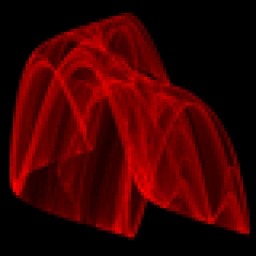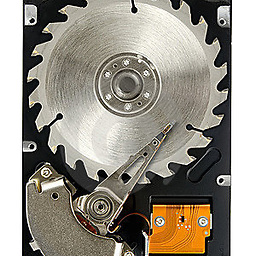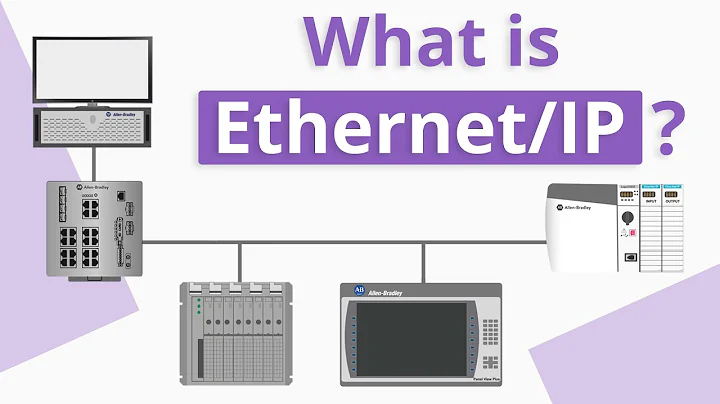Ethernet vs TCP vs IP?
Solution 1
Imagine one of those pneumatic tube message systems. Ethernet is the tube used to send the message, IP is an envelope in the tube, and TCP/UDP is a letter in the envelope.
Someone (an application) writes a letter and stuffs it in an envelope. Another person (a NIC) looks at the address on the envelope, puts it in a tube, caps it off, stuffs it in the right door to bring it closer to its destination, then pushes the button.
The tube gets carried to another door, where someone (a router) opens the tube, reads the address, puts it back in the tube, and sends it through another door.
Eventually it arrives at its destination, where the NIC on the other side picks it up and gives it to the application.
This is, of course, a vast oversimplification of what actually happens, but it is a fairly decent base on which to start.
Solution 2
Anyone of them used in a layer. Ethernet in layer 2, IP in layer 3 and TCP in layer 4 (Layer numbers are based on OSI model).
Every of them has dutty of packet delivery from one thing to another:
Ethernet : From one hop to another (hop means directly connected device)
IP: From one end to another (remote device or connected device)
TCP: From one process to another (process running on the two ends)
Solution 3
Greatly simplified and potentially inaccurate. ;) tcp (Transmission Control Protocol) and ip (Internet Protocol) are software protocols. They work at different layers of the networking stack. Ethernet is the medium that it transmits over versus thing likes token ring, fiber, etc. describing the physical layer of the stack.
Solution 4
Ethernet
The physical communication service. Reads and writes messages on the wire. (simplified)
IP
The forwarding service. It (unreliably) reloads messages from one wire onto another, so nodes can send messages to nodes they are not physically connected with.
TCP
Kind of a wrapper around IP. Utilizes IP's messaging service in order to provide connections between processes running on different nodes, which
- are reliable (requests retransmissions if messages get lost)
- avoid congestion on the communication path
- won't overwhelm receiver
Solution 5
Physical (layer 1): Some sort of physical (electrical, electromagnetic, optical) signaling method and standard. Almost always handled in hardware. Heavily medium and speed dependent.
Ethernet (layer 2): Uses MAC addresses to identify nodes - "Protocol data units" are called frames. This layer has no concept of a internetwork. It sends a frame to a destination, assuming that it can throw out through the medium and that it will get there.
IP (layer 3): Uses IP addresses to identify nodes - "Protocol data units" are called packets. This layer allows an IP addressing scheme to be used. The concept of an internetwork begins to come into play at this layer. Now we have a basic mechanism that lets us say "This set of IP addresses is reachable if we throw the packet directly out through the medium" and "This other set of IP addresses is only indirectly reachable - we must send it to a gateway."
UDP (layer 3.1ish): Basically, an IP packet extended to have the concept of a "port" bolted on it. Ports let you address different listeners on the same host - so more than one program on a host can use all this great stuff and the medium can be utilized more effectively.
TCP (layer 4): Uses ports to allow multiple senders/listeners in addition to IP addresses to identify nodes - "Protocol data units" are called segments. This layer implements "connection oriented services" and makes all the guarantees that IP does not. IP packets may arrive out of order or not arrive at all. TCP keeps track of packets using a windowing scheme and tries to make sure through acknowledgements that the destination did get all of its data.
Related videos on Youtube
waka
Updated on September 17, 2022Comments
-
 waka 4 months
waka 4 monthsWhat is the difference between
Ethernet,TCP, andIPin simple (simple abstract) terms?Please do not copy from Wikipedia...
-
 Nick T about 12 yearsIf you're interested about networks, learn the OSI "7-layer" model en.wikipedia.org/wiki/OSI_model Relevant for most, if not all, networks, be they cell-phone, Wi-Fi, BlueTooth, remote car unlock...
Nick T about 12 yearsIf you're interested about networks, learn the OSI "7-layer" model en.wikipedia.org/wiki/OSI_model Relevant for most, if not all, networks, be they cell-phone, Wi-Fi, BlueTooth, remote car unlock... -
 Ian Boyd about 12 yearsNobody should be forced to learn the OSI model.
Ian Boyd about 12 yearsNobody should be forced to learn the OSI model.
-
-
 Belmin Fernandez about 12 yearsThis answer should be printed in a middle school textbook. No wonder you have over 18K reputation.
Belmin Fernandez about 12 yearsThis answer should be printed in a middle school textbook. No wonder you have over 18K reputation. -
 chiggsy about 12 yearsHell yes, this is a great explanation! Thanks!
chiggsy about 12 yearsHell yes, this is a great explanation! Thanks! -
 Michael Hampton over 10 yearsSo it really is a series of tubes!
Michael Hampton over 10 yearsSo it really is a series of tubes! -
 wnrph over 10 yearsWhat about TCP? Adding a metaphor which addresses stream-orientation, multiplexing, connection and reliability would turn this great answer into a perfect one.
wnrph over 10 yearsWhat about TCP? Adding a metaphor which addresses stream-orientation, multiplexing, connection and reliability would turn this great answer into a perfect one. -
 Ignacio Vazquez-Abrams over 10 years@artistoex: While that is true, it would also make it much longer, and would require a reworking of the underlying analogy. It's best to address those particular concerns in a parallel analogy rather than to attempt to shoehorn it into this one.
Ignacio Vazquez-Abrams over 10 years@artistoex: While that is true, it would also make it much longer, and would require a reworking of the underlying analogy. It's best to address those particular concerns in a parallel analogy rather than to attempt to shoehorn it into this one. -
 Admin about 8 yearsAs a networks major this has to be one of most simple explanations I've ever heard. Take my upvotes!
Admin about 8 yearsAs a networks major this has to be one of most simple explanations I've ever heard. Take my upvotes! -
 barrrista over 7 yearsAwesome way to look at it. To add to it. Ethernet has mac addresses in the header, to specify which nearby machine to send to. IP adds IP address info so packet can be routed across several routes. TCP adds port info, so multiple processes running on the same machine (with an IP address) can be differentiated.
barrrista over 7 yearsAwesome way to look at it. To add to it. Ethernet has mac addresses in the header, to specify which nearby machine to send to. IP adds IP address info so packet can be routed across several routes. TCP adds port info, so multiple processes running on the same machine (with an IP address) can be differentiated. -
hsl over 6 yearsUDP is the same layer as TCP -- calling it layer 3.1 doesn't work. TCP is "protocol 6" and UDP is "protocol 11" in the IPv4 protocol (or IPv6 next header) field. They are both wrapped by IP (UDP doesn't wrap TCP).
-
 LawrenceC over 6 yearsVery true. I have learned much since posting this 4 years ago, lol.
LawrenceC over 6 yearsVery true. I have learned much since posting this 4 years ago, lol. -
 Q-bertsuit over 4 yearsI second @artistoex, I would love to see this explanation taken further! Such a great analogy.
Q-bertsuit over 4 yearsI second @artistoex, I would love to see this explanation taken further! Such a great analogy. -
 arrowd over 1 year@barrrista Why can't routing be done on Ethernet level?
arrowd over 1 year@barrrista Why can't routing be done on Ethernet level?



